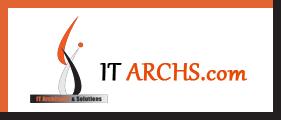Itarchs Laravel has emerged as a popular choice for website creation among developers, offering a powerful and efficient framework for building robust web applications. With its elegant syntax, expressive codebase, and comprehensive set of features, Laravel has revolutionized the way developers approach website development. In this article, we will explore the key aspects of Laravel website creation, including its benefits, features, best practices, and examples of successful Laravel websites Itarchs.
Introduction to Laravel
Laravel is an open-source PHP framework that follows the Model-View-Controller (MVC) architectural pattern, providing developers with a structured and organized approach to building web applications. Developed by Taylor Otwell in 2011, Laravel has since gained widespread adoption due to its simplicity, scalability, and extensive documentation. Laravel Website Creation
Benefits of Using Laravel for Website Creation
Elegant Syntax Laravel features a clean and expressive syntax that allows developers to write concise and readable code, reducing development time and effort.
Modularity Laravel provides a modular architecture, allowing developers to organize their code into reusable components known as modules or packages. This modularity enhances code maintainability and scalability. Laravel Website Creation
Built-in Features Laravel comes with a wide range of built-in features, including authentication, routing, caching, and session management, saving developers from the hassle of implementing these features from scratch.
Database Migration Laravel’s migration feature enables developers to manage database schema changes using PHP code, making it easy to version-control database changes and synchronize database schemas across different environments.
Blade Templating Engine Laravel includes the Blade templating engine, which offers a simple yet powerful way to create dynamic and reusable templates, facilitating the separation of concerns between presentation and business logic.
ORM (Object-Relational Mapping) Laravel’s Eloquent ORM simplifies database interactions by providing a fluent and expressive syntax for defining database models and performing CRUD operations.Laravel Website Creation
Community Support Laravel boasts a vibrant and active community of developers who contribute plugins, extensions, and resources to the ecosystem, making it easier for developers to find solutions to common problems and stay updated with the latest developments.
Laravel Website Creation Process
Project Setup The first step in Laravel website creation is setting up the project environment, which involves installing Laravel using Composer, configuring the database connection, and creating the project directory structure.
Routing Laravel uses a routing system to map URLs to controller actions, allowing developers to define application routes in a clean and concise manner using the routes/web.php file.
Controllers Controllers in Laravel are responsible for handling HTTP requests and executing business logic. Developers can create controllers using the Artisan command-line tool and define methods to handle different types of requests.
Views Views in Laravel are used to render HTML content and display data to the user. Laravel’s Blade templating engine provides a simple and intuitive syntax for creating dynamic and reusable view templates.
Database Migration Laravel’s migration feature allows developers to define and manage database schema changes using PHP code. Migrations can be used to create, modify, and delete database tables, columns, and indexes.
Model-View-Controller (MVC) Laravel follows the MVC architectural pattern, which separates the application logic into three components: models (for data handling), views (for presentation), and controllers (for business logic).Laravel Website Creation
Middleware Middleware in Laravel provides a mechanism for filtering HTTP requests before they reach the application’s routes or controllers. Developers can use middleware to implement authentication, authorization, and other request processing tasks.
Authentication Laravel comes with built-in support for authentication and authorization, allowing developers to easily implement user authentication, registration, password reset, and other security features.
Testing Laravel provides a robust testing framework for writing and executing automated tests to ensure the correctness and reliability of the application. Developers can write unit tests, feature tests, and browser tests using Laravel’s testing tools.
Deployment Once the Laravel website is developed and tested, it can be deployed to a production environment using various deployment methods such as FTP, Git, or cloud platforms like AWS, Azure, or DigitalOcean.
Best Practices for Laravel Website Development
Follow Laravel Naming Conventions Adhering to Laravel’s naming conventions for routes, controllers, models, and other components helps maintain consistency and readability across the codebase. Laravel Website Creation
Use Laravel Helpers and Facades Laravel provides a set of helper functions and facades that streamline common tasks such as generating URLs, working with arrays, and interacting with the database. Leveraging these helpers and facades can simplify code and improve developer productivity.
Optimize Database Queries Efficient database queries are crucial for ensuring optimal performance and scalability of Laravel websites. Developers should utilize Eloquent’s query builder methods, eager loading, and caching mechanisms to minimize database load and improve response times.
Implement Caching Laravel’s built-in caching features, including Redis, Memcached, and file-based caching, can significantly improve the performance of web applications by reducing database queries and page load times. Laravel Website Creation
Secure Your Application Security should be a top priority in Laravel website development. Developers should implement best practices such as input validation, CSRF protection, password hashing, and XSS prevention to safeguard against common security threats.
Optimize Images and Assets Optimizing images and assets, such as CSS and JavaScript files, can help reduce page load times and improve the overall user experience. Developers should minify and compress assets and leverage browser caching to enhance website performance.
Monitor Application Performance Monitoring application performance using tools like Laravel Telescope or third-party monitoring services allows developers to identify and address performance bottlenecks, errors, and other issues in real-time Itarchs.
Examples of Successful Laravel Websites
Laracasts Laracasts is a popular online learning platform for web developers, offering video tutorials, screencasts, and articles on Laravel, PHP, JavaScript, and other web development technologies.
Invoice Ninja Invoice Ninja is an open-source invoicing and billing platform built with Laravel. It allows users to create and send invoices, manage clients and projects, and accept online payments.
Cachet Cachet is a status page system built with Laravel that enables companies to communicate real-time service status updates and incident notifications to their customers.
Laravel News Laravel News is a community-driven news website and newsletter that provides the latest updates, tutorials, and resources related to Laravel and the Laravel ecosystem.
Vanguard Vanguard is a user management and authentication system built with Laravel. It provides features such as user registration, login, role-based access control, and two-factor authentication.
Laravel offers a powerful and versatile framework for creating modern, scalable, and feature-rich websites. By leveraging Laravel’s expressive syntax, built-in features, and best practices, developers can build high-performance web applications that meet the needs of businesses and users alike. Whether you’re a seasoned developer or new to web development, Laravel provides the tools and resources you need to bring your ideas to life. Laravel Website Creation



